My Mom’s Easy and Authentic Korean BBQ Sauce Recipe.
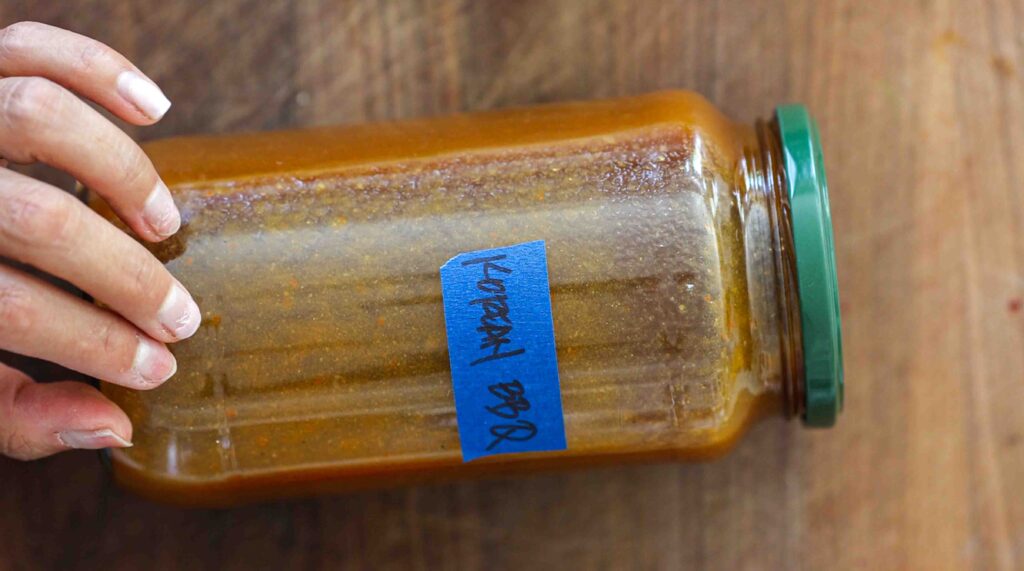
Easy. Powerful. Delicious.
This easy and authentic homemade Korean BBQ Sauce recipe comes right out of my mom’s recipe book and is a staple of Korean cuisine. She’s been using it for decades! And our family has been the lucky beneficiary of her Korean BBQ creations our whole lives! And now you can be too! Whether this is your first time making a homemade BBQ sauce or you’re an old pro at this, get ready to add this Korean BBQ sauce recipe to your pantry!
What Is Korean BBQ Sauce?
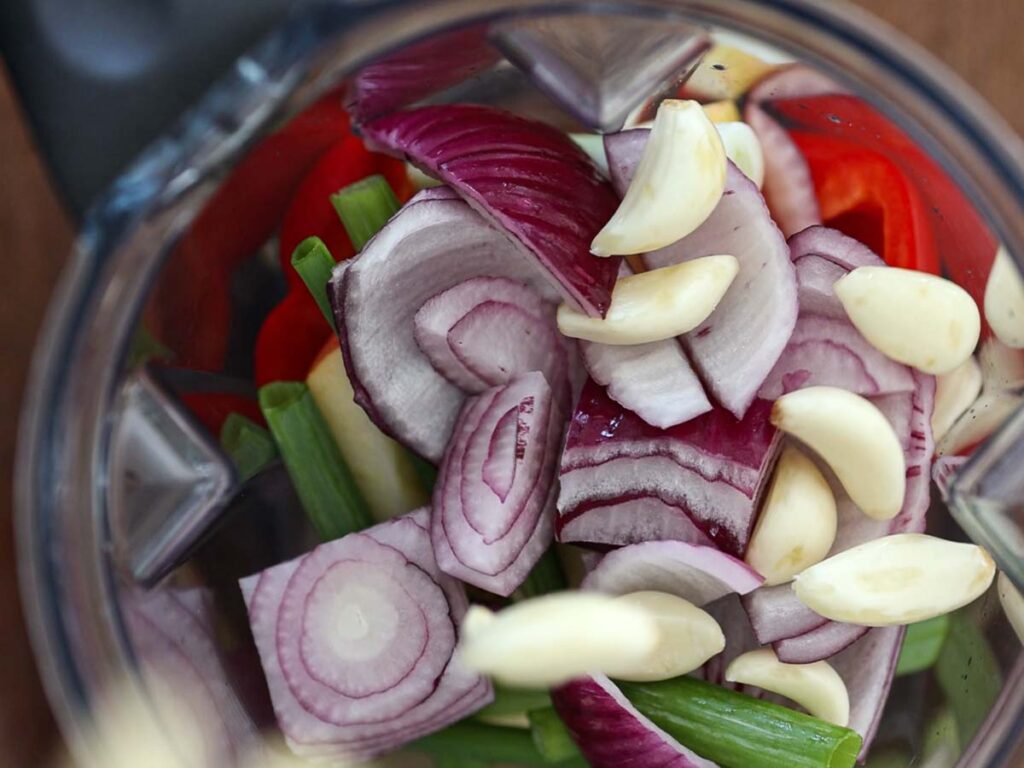
If you are at all familiar with Asian cuisine and Korean food, then by now, you’ve probably heard of Korean BBQ–thin strips of various meats are cooked on a grill inside lettuce wraps and served with vegetables, rice, and some type of stew (usually doenjang jjigae). Many of those pieces of grilled meat are marinated in Korean BBQ marinade, which has a similar flavor profile to teriyaki sauce. The protein is marinated for hours (if not overnight) and grilled over an open flame or roasted (as my mom often did when she was making short ribs (galbi) and the grill wasn’t available).
What is the difference between a Korean BBQ sauce and a marinade? Mostly, it’s just about consistency. A marinade is a thin liquid, while a sauce is thickened with some type of starch.
How is Korean BBQ sauce different from American BBQ sauce? While both kinds of BBQ sauce have an umami base, the main difference is that most American BBQ sauces start with a tomato base, whereas Korean BBQ sauce starts with soy sauce.
The best part of Korean BBQ sauce, though, is that it is an incredibly versatile sauce. You can use it on any protein, and therefore, vegans and vegetarians can enjoy the mouthwatering flavors of Korean BBQ without the meat! Korean BBQ sauce is also excellent as a dipping sauce for all sorts of things, from a plate of dumplings to spring rolls to a bag of tortilla chips!
Why You’ll Love This Korean BBQ Sauce Recipe.
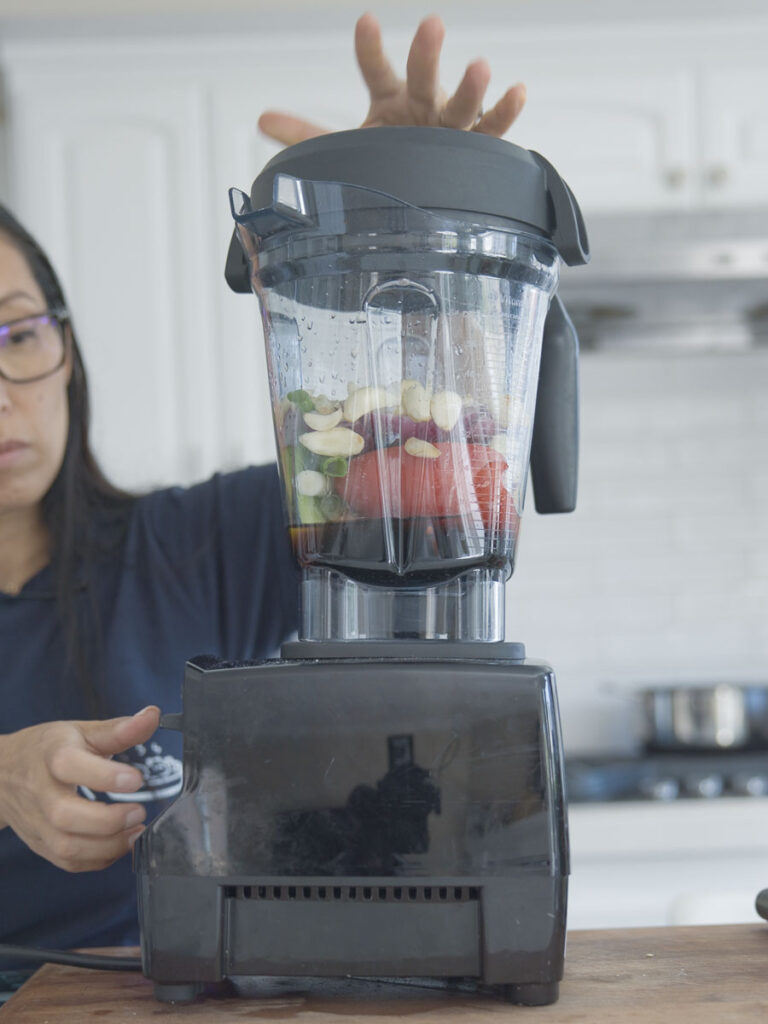
The hallmark of a good Korean BBQ sauce is one that has:
Incredible flavor.
The perfect consistency.
Complements a variety of foods.
This Korean BBQ Sauce recipe will do all of these things.
It will include a bunch of whole food natural ingredients that will impart the perfect balance of a kaleidoscope of flavors, starting with soy sauce. This Korean BBQ sauce recipe will also create a thick sauce, one that will stick to whatever protein or vegetable you use it on. And finally, this Korean BBQ Sauce recipe is good on just about everything. It’s got an intense depth of flavor, but it won’t be overpowering.
Ingredients for this Korean BBQ Sauce Recipe and Notes on Substitutions.
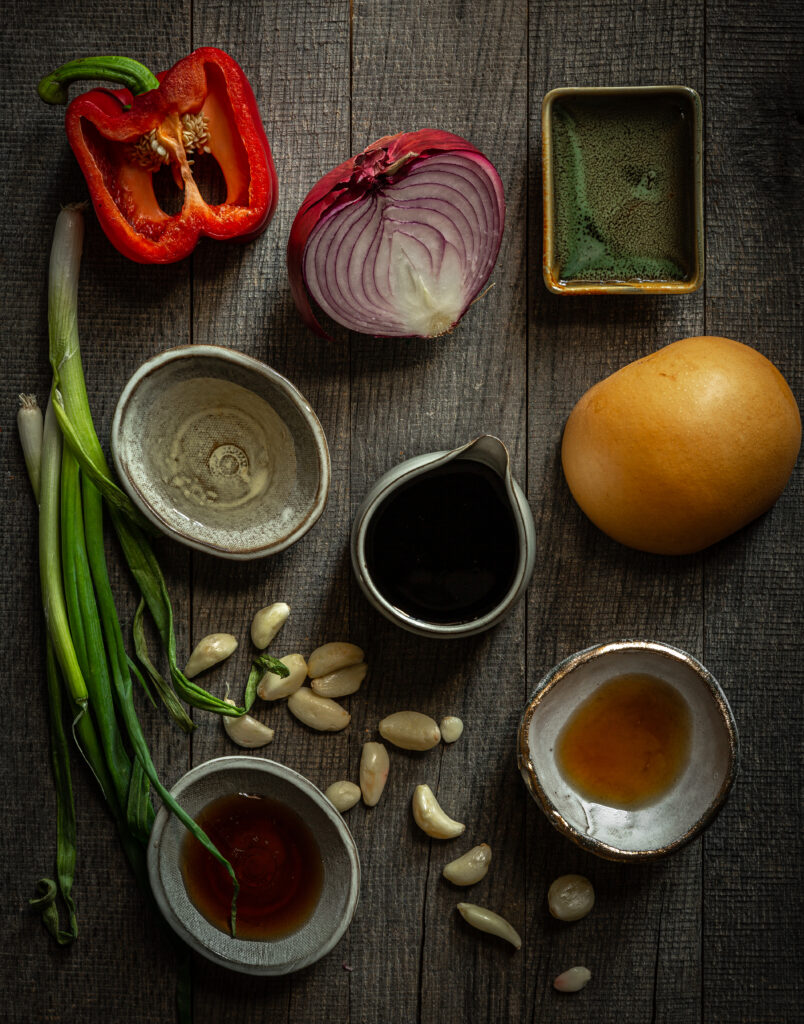
The following are the key ingredients to this Korean BBQ Sauce Recipe:
Soy Sauce. As I mentioned, the main ingredient is soy sauce, which serves as the base for this Korean BBQ Sauce recipe. What kind of soy sauce, you ask? I would pick a lower sodium or a straight up low sodium soy sauce, so as to avoid having your Korean BBQ sauce come out too salty. In other words, this is not the ideal recipe to use your Korean soup soy sauce in (like we do for our vegan fishy sauce). You can also grab a gluten-free soy sauce to keep this Korean BBQ Sauce recipe gluten-free. Finally, if you can’t use soy sauce, coconut aminos or this soy-free soy sauce are your best bets.
Raw Onion. Yup. This recipe calls for half a raw onion. I told you it’s going to be a flavor bomb! The onion will lend a little natural sweetness, but will also add incredible umami flavor to this Korean BBQ Sauce recipe. You can use pretty much whatever variety of onion you like, but my mother typically uses a regular yellow onion. I have, however, used red onion before and it adds great zip!
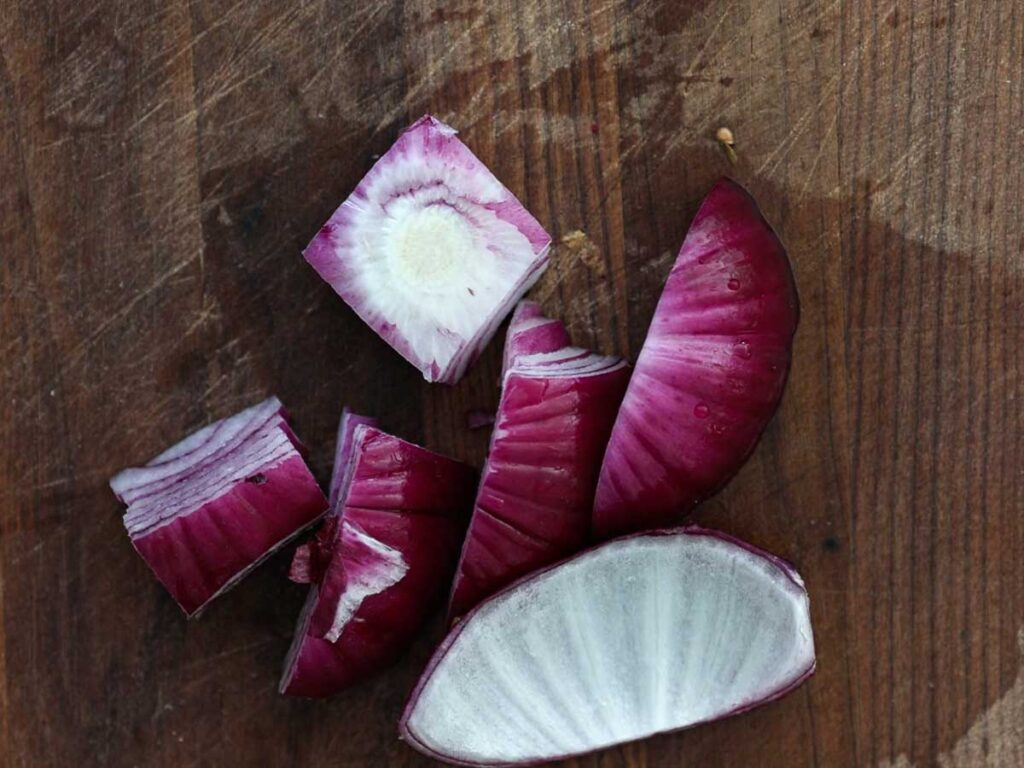
Green Onion. Green onions provide a delicacy to this Korean BBQ Sauce recipe and therefore, make sure you include them. I know–it seems redundant to the entire raw onion that also goes into this recipe, but trust me–you’ll notice its absence!
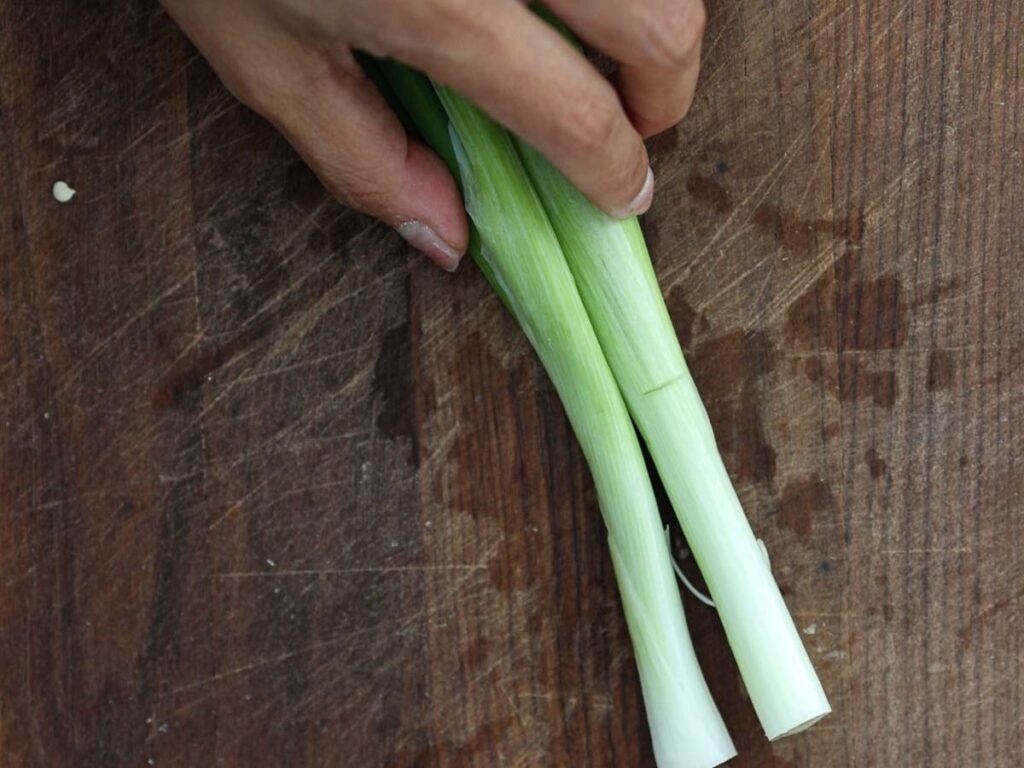
Fresh Garlic. I mean, you can’t have a good Korean BBQ sauce recipe without a LOT of fresh garlic! How many cloves of garlic, you ask? Well, I usually use at least one head of garlic, which consists of around 8 to 9 large cloves plus a handful of smaller cloves of garlic. Can you use pre-minced garlic? Sure, I’m not going to judge you for using store-bought help! But fair warning–it won’t have quite the garlicky goodness!
Fresh Ginger. Look, I am not a ginger fan. Never have been and probably never will be. But even I am not going to deny the role that ginger plays in a good Korean BBQ sauce recipe. That said, a little goes a LONG LONG way! I only use the tiniest bit of ginger, lest it become too overpowering. Once again, you can go ahead and use pre-grated ginger here, and I don’t think it’ll make as much difference as the garlic since you’re using such a small amount.
Asian Pear. My mother would dump at least half a massive Korean pear in her Korean BBQ Sauce recipe. If you can grab your hands on a good one, definitely use that. However, I realize that not everyone has access to good Korean pears (I’ve seen some horrible ones at my local grocery stores). You can absolutely substitute a good apple for the pear. What kind of apple? Your best bet is a Fuji Apple, but if you can’t get that, honeycrisp or gala will do, as well. I would avoid granny smith, as its tartness may get in the way of some of the other flavors.
Brown Rice Syrup. Store-bought versions of Korean BBQ sauce will very often contain corn syrup. But I do not do corn syrup in my recipes! Nope! In lieu of corn syrup, I use brown rice syrup. Not only is this far healthier than corn syrup, brown rice syrup provides earthy, caramel notes to this Korean BBQ Sauce recipe. If you don’t have brown rice syrup, you can also substitute with maple syrup, though, you may want to use a little bit less than what the recipe calls for, since maple syrup tends to be a bit sweeter than brown rice syrup.
Vinegar and Mirin. It’s important to cut through some of the rich flavor of this Korean BBQ Sauce recipe with a bit of acid. That’s where rice vinegar and mirin (rice wine) come in. If you don’t have any rice wine vinegar, you can substitute with any fruit forward vinegar, like an apple cider vinegar. If you don’t have mirin, you can add another half tablespoon of brown rice syrup.
Red Bell Pepper. Ok, red bell pepper is usually not in the traditional recipes for Korean BBQ sauce. However, I’ve always loved the bright flavor that bell pepper imparts and therefore started adding it when I began making my mother’s recipe on my own. Some Korean BBQ sauce recipes include chili powder or gochugaru (Korean chili flakes), but my mother’s never did. If you don’t want to add red bell pepper but still want a bit of heat, I would recommend adding a tablespoon or two of Korean chili powder.
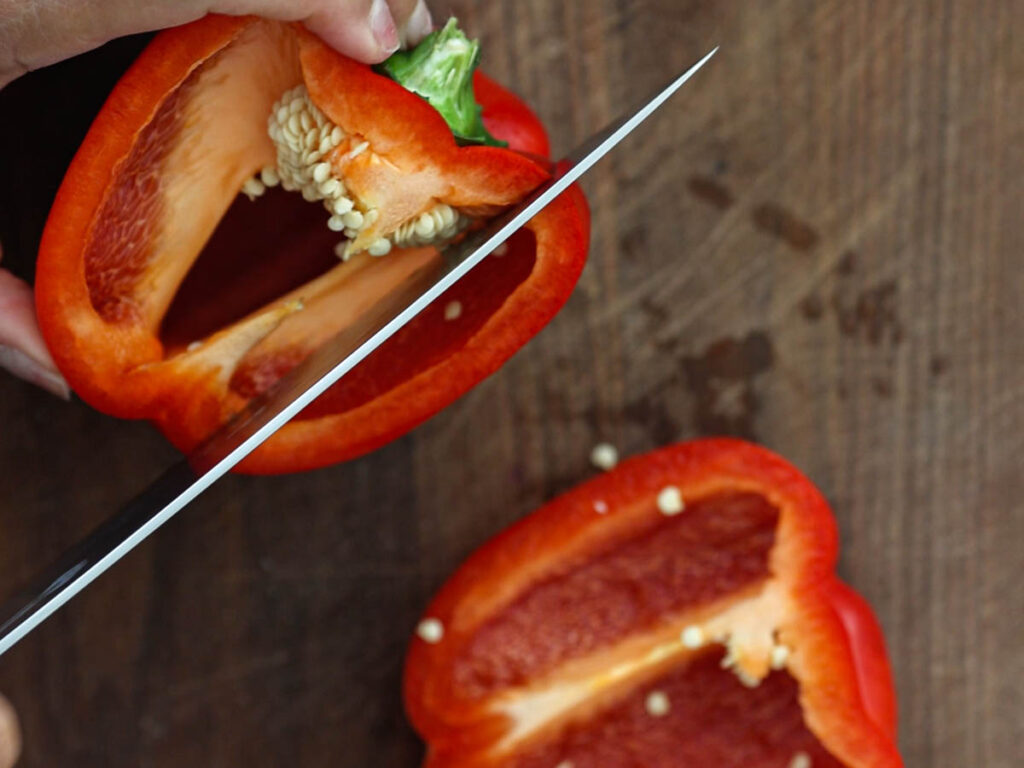
Soju. Ok, my mom used to pour an entire can of 7-Up or Sprite straight into her sauce. We are not going to do that here! In lieu of that sweet stuff, I like to use more of an adult flavor and go with soju. However, if you don’t have access to this Korean spirit (don’t worry, the alcohol gets cooked off during the sauce thickening part), or would rather avoid it altogether (I get ya!), just substitute with sparkling water!
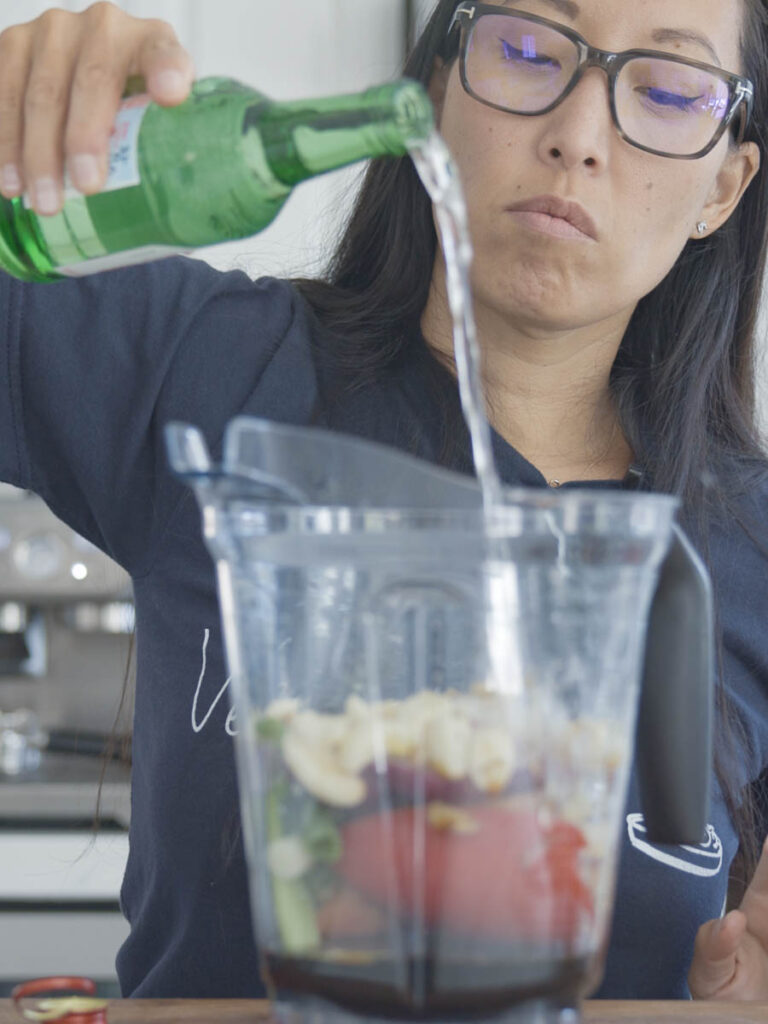
MSG. So, the name of this game is flavor. As a result, I add just a pinch of MSG. If you don’t want to, you can skip it!
Liquid Smoke. Another addition to my mom’s recipe is the inclusion of liquid smoke. I think it provides just a tiny bit of smokiness that reminds you of regular bbq sauce. But, if you don’t have liquid smoke, don’t worry about it. My mom never used it in hers!
Potato Starch. Most traditional Korean BBQ sauce recipes call for potato starch as the main thickener, which is what results in that glossy appearance. But if you don’t have potato starch, you can also use corn starch to create a cornstarch slurry to thicken the sauce.
Step-by-Step Korean BBQ Sauce Recipe.
Step 1. Blend All the Ingredients.
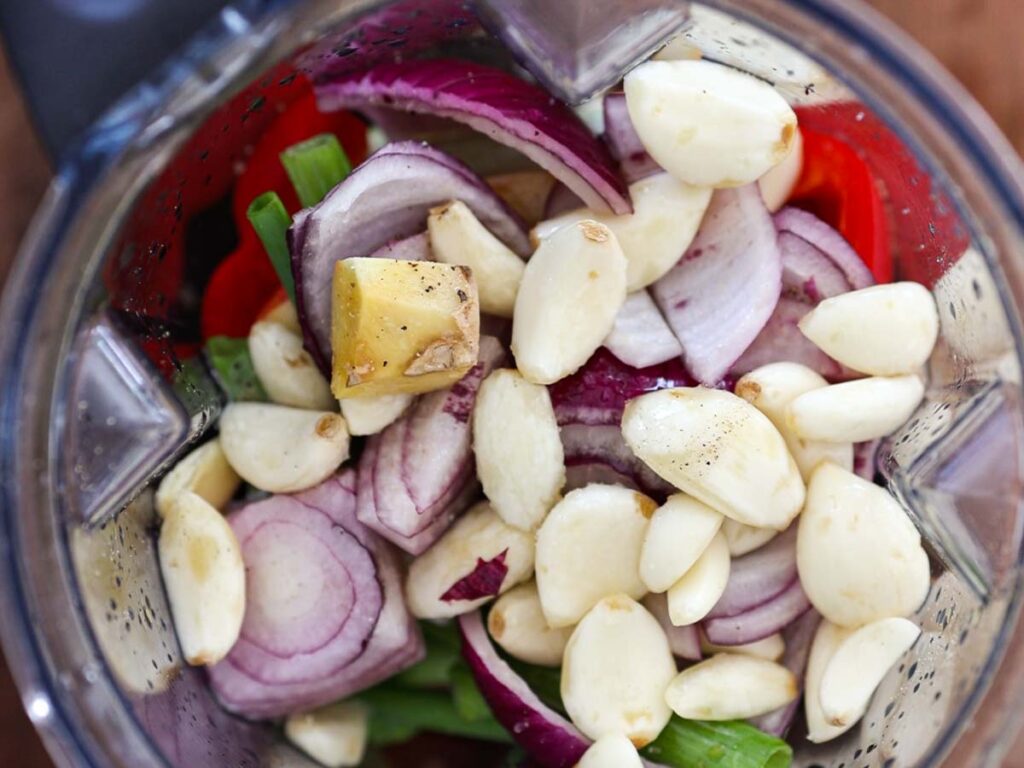
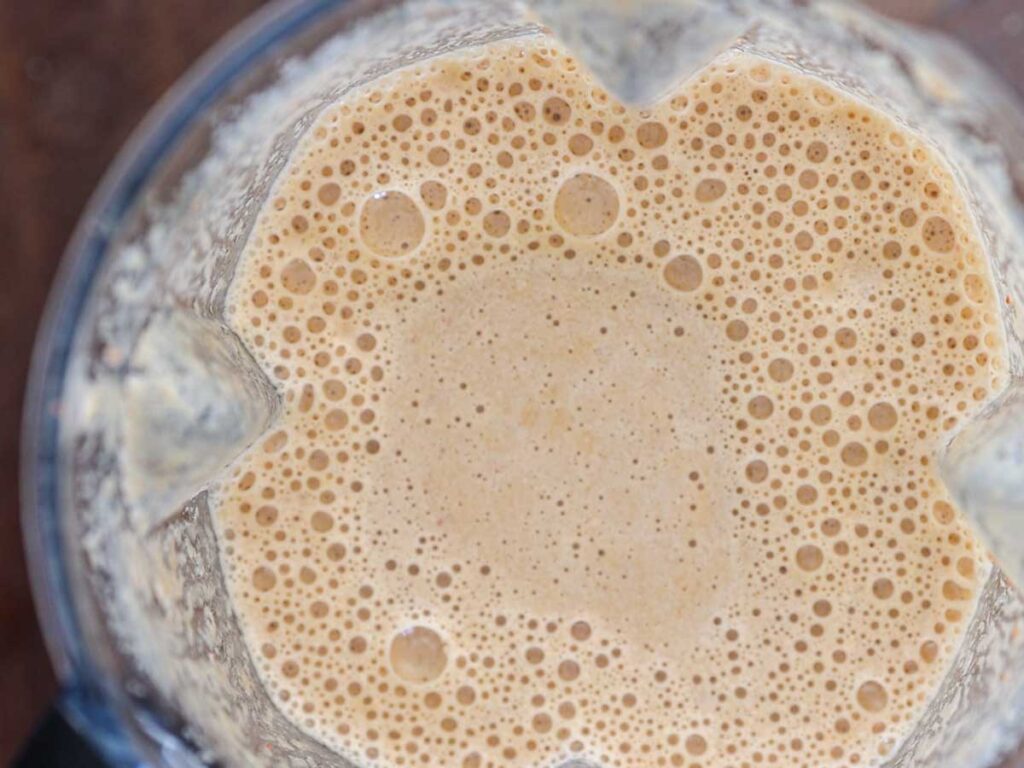
The first step to making this Korean BBQ Sauce recipe is simply to blend all the ingredients (minus the potato starch) in a reliable blender, until you achieve a smooth and frothy liquid. (This is what my mother would use as a marinade to marinate her bulgogi and galbi. Marinating your tofu with this stuff is a great way to inject massive amounts of flavor before you bake them or fry them up in a pan.)
Step 2. Thicken the Marinade Into a Sauce.
Pour the contents of the blender into a small saucepan over medium-high heat. While the liquid comes to a boil, make the potato starch slurry by adding the potato starch to a very small bowl, adding 1/4 cup of cold water, and whisking it until well combined.
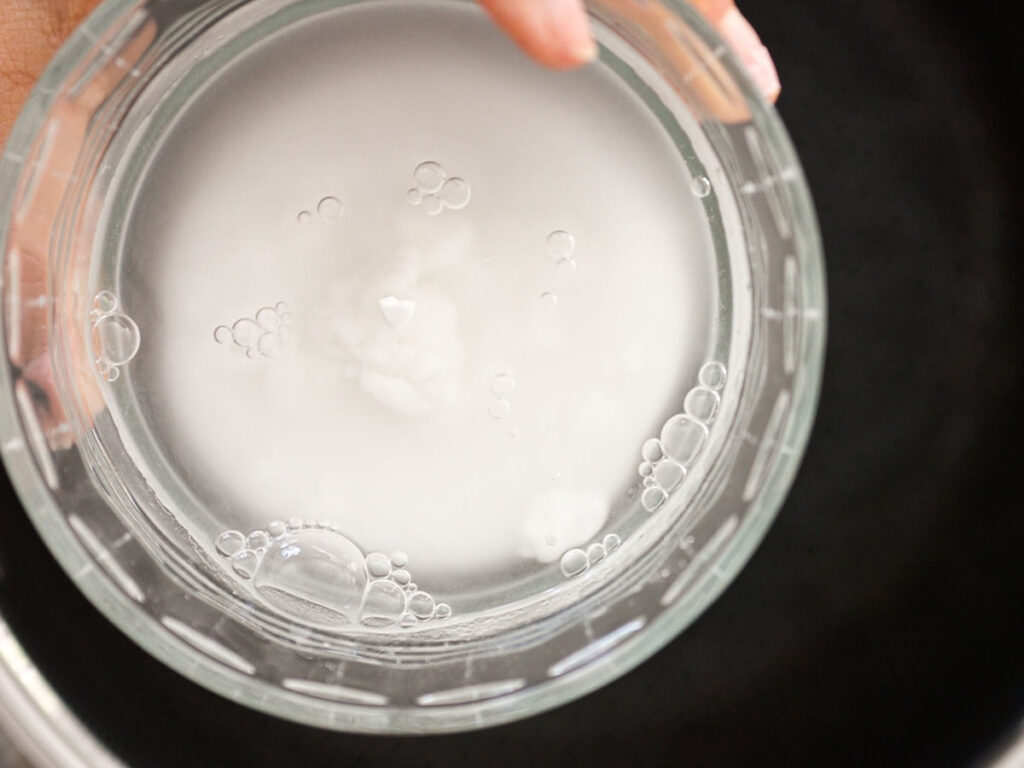
Once the marinade comes to a bubbly boil, pour the slurry into the saucepan and using either a wooden spoon or a whisk, stir the liquid regularly to avoid the formation of chunks. In about 5 minutes, your marinade should clarify and thicken into a sauce. How can you tell it’s the right consistency? Run a wooden spoon down the center of your saucepan–if the liquid takes its sweet, slow time covering the bottom of your pan, you’re ready to go!
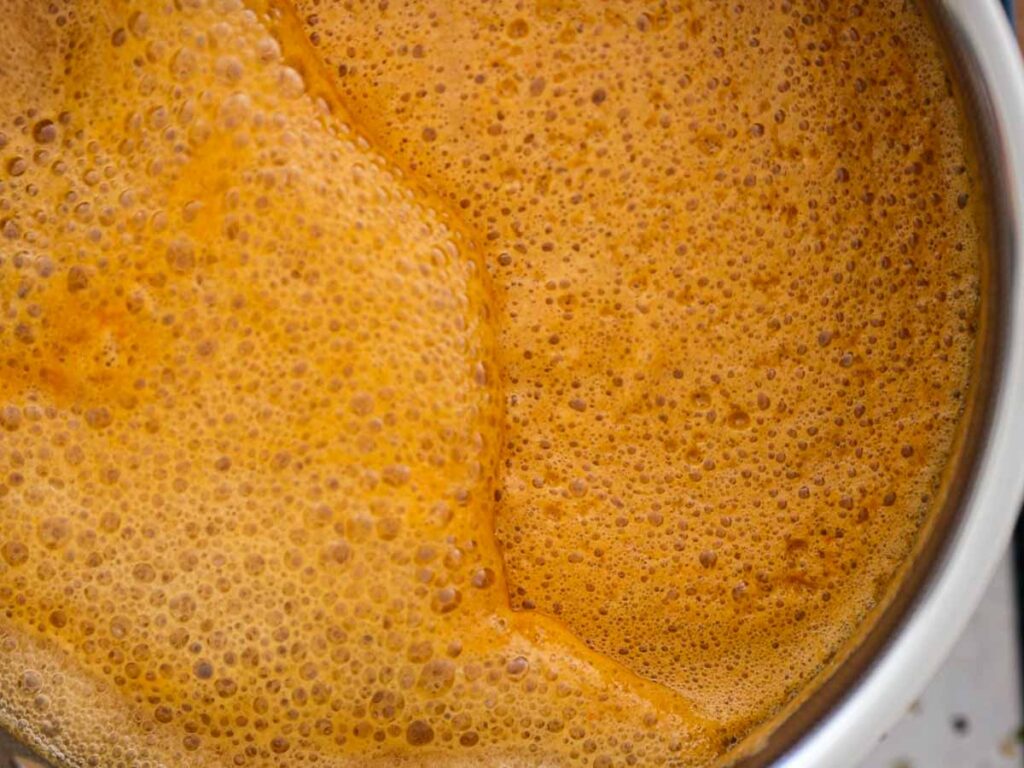
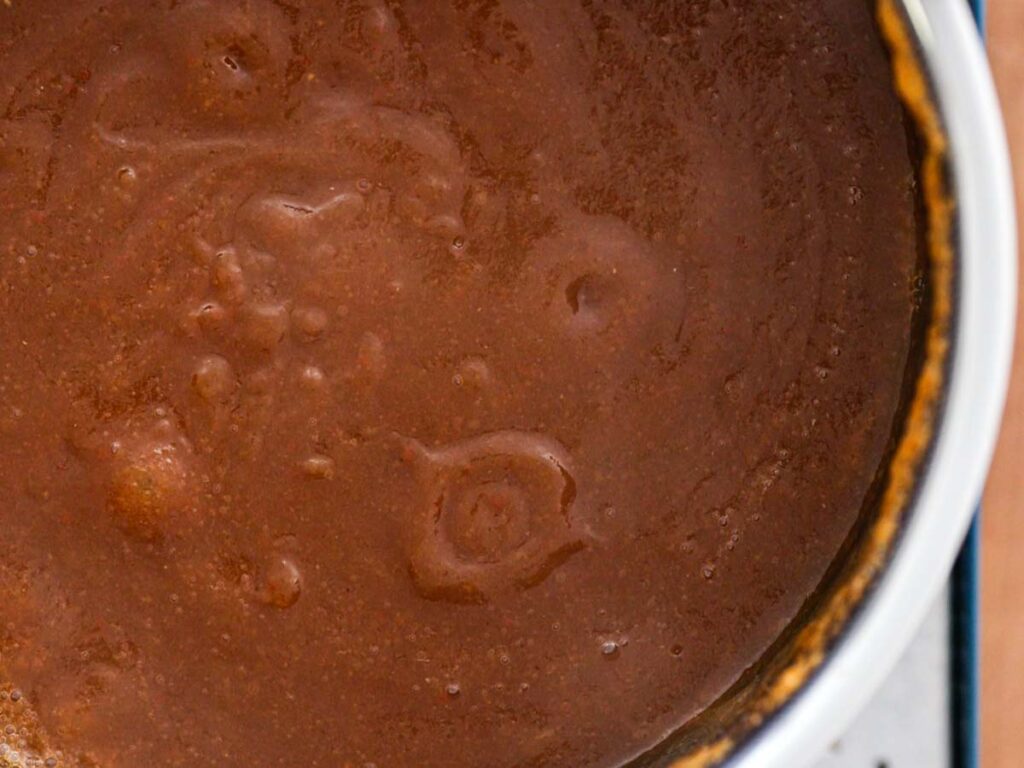
Step 3. Store Your Korean BBQ Sauce.
I like to store my Korean BBQ sauce in a sterilized mason jar, but only after it’s cooled a bit. Using a kitchen funnel, I pour the Korean BBQ sauce into my mason jar, label it, and stick it in the refrigerator. The great thing about this Korean BBQ Sauce is that it’ll last for several weeks. It’s also totally freezable if you want it to keep even longer.
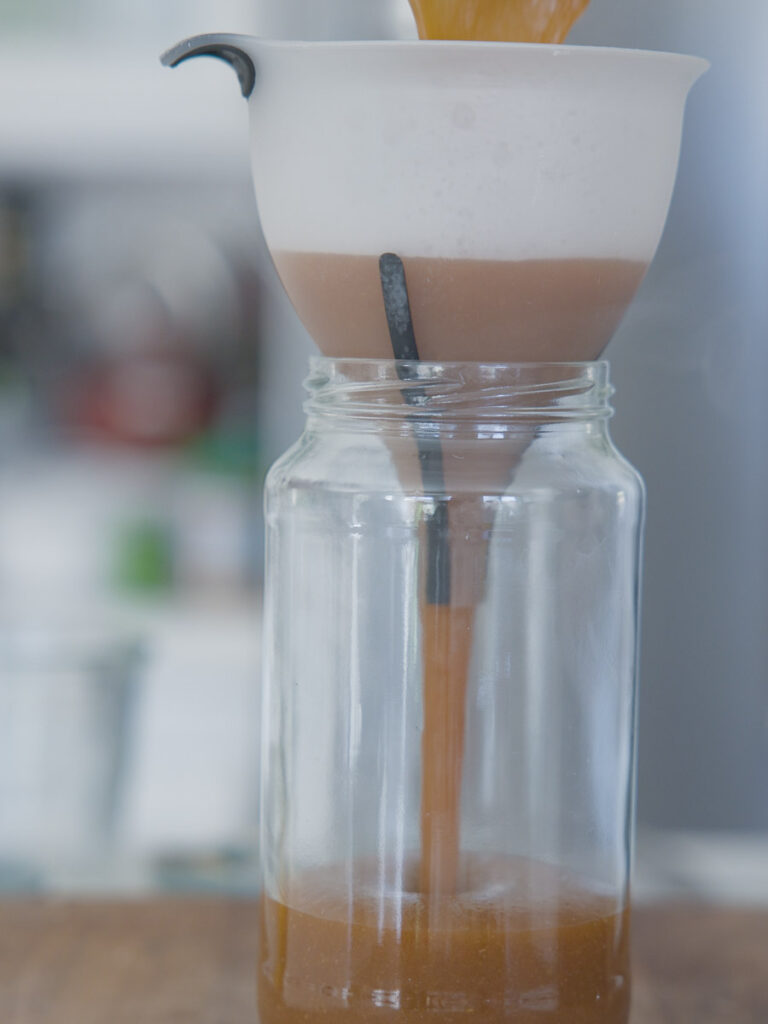
Frequently Asked Questions.
Can’t you just buy Korean BBQ sauce these days?
Absolutely. However, like everything else these days, it can be quite expensive. Moreover, many of them contain gums and other additives designed to keep them shelf stable. Others often rely heavily on cheap sweeteners like corn syrup.
How long does this Korean BBQ Sauce stay good for?
If you keep your Korean BBQ Sauce in the refrigerator, it’ll last for several weeks.
What are some ways I can use my Korean BBQ Sauce?
In addition to using it for barbecue, this Korean BBQ Sauce is great to use for making black bean burgers, as a sauce for sandwiches, or, when mixed with gochujang paste (Korean chili paste), you got yourself an excellent sauce to drizzle over your rice bowl or bibimbap!
Is Korean BBQ sauce gluten-free?
Typically, Korean BBQ sauce is NOT gluten-free because soy sauce usually contains gluten. However, you can make this recipe gluten-free by using gluten-free soy sauce and gluten-free liquid smoke!
Recipe Card.
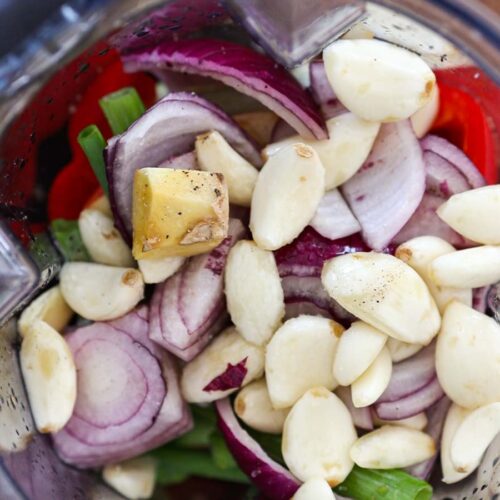
Easy & Authentic Korean BBQ Sauce Recipe.
Ingredients
- 1 cup soy sauce (preferably low sodium soy sauce)
- 1/2 onion
- 1/2 Asian pear (can substitute Fuji apple or other sweet apple)
- 4 green onions
- 1/2 red bell pepper
- 10-12 cloves garlic (washed, unpeeled, tips trimmed off)
- 1 tsp fresh ginger
- 1 pinch msg
- 1/4 cup brown rice syrup (can substitute with maple syrup)
- 2 tbsp mirin
- 1 tbsp rice vinegar
- 1/2 cup soju (can substitute with sparkling water)
- 1 tsp liquid smoke
- 1 tsp black pepper
- 2 tbsp potato starch
Instructions
- Rough chop all the vegetables and place the soy sauce in a blender together with the onion, green onion, Asian pear, red bell pepper, garlic, ginger, brown rice syrup, mirin, rice vinegar, msg, black pepper, and liquid smoke together with soju or 1 cup of water. Blend on high until smooth and frothy.
- Pour the marinade into a small saucepan over medium heat. Create a quick slurry by whisking the potato starch together with 1/4 cup cold water. Pour the slurry into the sauce pan and continue whisking the contents so as to avoid clumping.
- Mix regularly for about 5 minutes, until the sauce clarifies and thickens. Remove from heat and set it aside to cool for about 20 minutes. Then pour into a sterilized airtight container and store in the refrigerator. Your homemade Korean BBQ Sauce will stay good for several weeks!
Questions & Comments
September 11, 2024
Join The Discussion
September 11, 2024
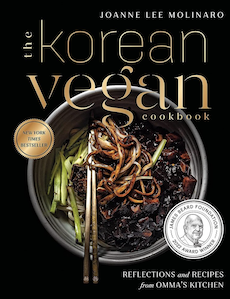
Oooh this looks beautiful and I want to try making it. Can you use tapioca flour instead of potato starch or is the potato starch important for the texture?
Hi! The potato starch is what gives it its glossy sheen and it comes out less flour-y than with corn starch. I’ve never used tapioca flour but the main purpose is to thicken the sauce. As long as it acts like corn starch or flour, it should be fine!